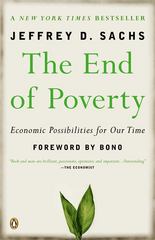Question
Q34. Under the conditions of monopolisticcompetition: A. average costs of production are the same in the short run as they are in the long run.
Q34. Under the conditions of monopolisticcompetition:
A.
average costs of production are the same in the short run as they are in the long run.
B.
economic profit is zero in the long run.
C.
price equals marginal cost.
D.
firm profits are higher in the long run than in the short run.
Q35. As firms enter a monopolistically competitive market in the longrun:
A.
priceincreases, the market quantity demandedincreases, and the quantity supplied by an individual firm increases.
B.
pricedecreases, but firm profits increase as average costs decrease.
C.
pricedecreases, the market quantity demandedincreases, and the quantity supplied by an individual firm decreases.
D.
price increases and firm profits increase.
Q37. Gasoline stations carrying the same fuel brand(e.g., Chevron) are able to charge different prices in San Franciscobecause:
A.
gasoline stations are perfect price discriminators.
B.
gasoline station operators for a cartel to act as a monopoly.
C.
location is a source for product differentiation.
D.
fuel quality varies across stores.
Q38. Recall the Application about the costs involved in opening a restaurant to answer the following question.
Recall the Application. The royalty fee of 8.25 percent of revenue that you would pay to Sonic(the owner of the SonicDrive-In brand)is:
A.
considered a variable cost.
B.
considered a sunk cost.
C.
considered a fixed cost.
D.
not considered part of your costs.
Q39. When there are just a few firms in theindustry, the industry structure is most likely tobe:
A.
a perfectly competitive industry.
B.
a monopoly market.
C.
a natural monopoly market.
D.
an oligopoly market.
Q40. The fourfirm concentration ratio measuresthe:
A.
average cost of the four largest firms in an industry.
B.
percentage of total output in a market produced by the four largest firms.
C.
elasticity of demand of the four largest firms in an industry.
D.
number of firms in an industry.
Q41. The HerfindahlHirschman Index measures
A.
the percentage of market share held by the four largest firms in a market.
B.
the market share held by the largest firm in a market divided by the market share held by all other firms in the market.
C.
the percentage of market share held by the largest firm in a market.
D.
the degree of concentration in a market.
Q42. A high degree of concentration in a market suggests that firms in that market
A.
have formed an illegal cartel.
B.
have the power to control prices.
C.
are perfectly competitive.
D.
cannot act strategically.
Q43. When firms cooperate with each other rather thancompete:
A.
both consumers and firms end up better off.
B.
the firms will end up better off.
C.
they will agree to set low prices to help each other out.
D.
consumers will end up better off.
Q44. A group of firms that coordinate their pricing decisions iscalled:
A.
a monopoly.
B.
a cartel.
C.
monopolistic competition.
D.
a duopoly.
Q45. Price fixing is an arrangement whereby firms agreeto:
A.
set price equal to average total cost.
B.
coordinate their pricing decisions.
C.
set price equal to marginal cost.
D.
set price equal to marginal revenue.
Q48. A Nash Equilibrium in a game is that outcome in which
A.
neither player plays his or her dominant strategy.
B.
theplayers' profits are equal.
C.
each player is doing the best he or she can given the otherplayer's action.
D.
theplayers' earn the highest profits possible.
Q49. Recall the Application about the attempt to form a salt cartel in the 19th century to answer the following question.
According to theApplication, what was the objective of firms when they created saltpools?
A.
To give support to financially troubled salt mines.
B.
To lobby the state governments to prevent salt from other states to enter.
C.
To decrease competition and keep prices uniformly high.
D.
To decrease competition and keep prices uniformly low.
Q50. Suppose Kevin offers to match hiscompetitors' prices in an oligopoly market. This will have the effectof:
A.
triggering an antitrust investigation.
B.
providing consumers with the lowest possible price.
C.
driving out his competition.
D.
decreasing hiscompetitors' incentive to reduce price.
Q51. What makes a grim trigger strategy"grim" is:
A.
if one playeroverprices, then the other overprices to the point of zero quantity demanded.
B.
if one playerunderprices, then the other player notifies the Federal Trade Commission.
C.
if one playerunderprices, then the other player is driven out of the market.
D.
if one playerunderprices, then the other player drops the price so far that profits for both firms are zero.
Q52 If two firms use a titfortat scheme to maintain cartel pricing and one firm chooses a low price in the current time periodthen:
A.
the other firm will choose a low price in the next time period.
B.
that firm will also choose a low price in the next time period.
C.
that firm will also choose a high price in the next time period.
D.
the other firm will choose a high price in the next time period.
Q53. Recall the Application about lowprice guarantees and the prices of tires to answer the followingquestion(s).
Recall the Application. A study of the retail tire market suggests that prices are________ in markets where firms offer lowprice guarantees.
A.
generally lower
B.
generally higher
C.
generally unchanged
D.
always lower
Q55. If there is the legitimate threat of entry into amarket, then the market is said tobe:
A.
secure.
B.
reactive.
C.
contestable.
D.
perfectly competitive.
Step by Step Solution
There are 3 Steps involved in it
Step: 1

Get Instant Access to Expert-Tailored Solutions
See step-by-step solutions with expert insights and AI powered tools for academic success
Step: 2

Step: 3

Ace Your Homework with AI
Get the answers you need in no time with our AI-driven, step-by-step assistance
Get Started


